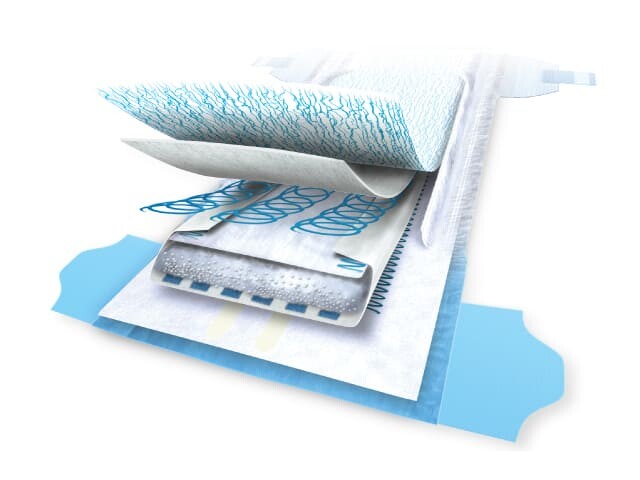Compound and Pre-Compound Core at a Glance
In disposable hygiene products such as baby diapers, an absorbent core that helps users stay dry is a priority. A comfortable fit, skin wellness, softness, and discretion can also influence consumer preferences and purchasing decisions.
Article producers are looking for new ways to offer a core that supports consumer confidence and comfort whilst still being cost-effective. The use of compound and pre-compound cores is one of the emerging options for manufacturers.
The benefits of the compound and pre-compound core
The typical core matrix consists of both superabsorbent polymer (SAP) and cellulose fluff. Some consumers—especially those in certain regions of the world—feel this means the product is more absorbent. For other users, however, discretion and comfort are prominent factors in their selection. Bulky cores are not well-suited to fulfilling these needs. As a result, manufacturers explored a higher SAP-to-fluff ratio but discovered this could lead to an increased chance of core cracking.

The primary advantages of the compound/pre-compound core are:
- Thinner profile
- Excellent integrity when wet
- Simplified production due to being fluff-free
This core design first emerged in the Chinese market and appealed to many consumers for their discretion and comfort. Using no fluff, they are made by layering superabsorbent polymer (SAP) within layers of absorbent layers and high loft synthetic nonwoven fabric. A core adhesive is needed to hold all of these layers together and keep the SAP particles contained. As for the difference in names, compound cores are created inline. Pre-compound cores are prepared offline, before being moved in boxes or rolls to the production line.
The challenge of compound and pre-compound cores
A primary concern of manufacturers using the compound core design is SAP loss. This can occur during production, which may be somewhat reduced by the use of adhesive. However, SAP can also shift within the nonwoven pockets, where the adhesive is not used. When the SAP shifts, it can create both clumps of SAP and areas where liquid can pass through without being absorbed.
If you are considering making changes to your core, bring us into the conversation early. We can help ensure you have all the knowledge to choose the right adhesives.
Ready to talk?
Get in touch with a Bostik core expert.



